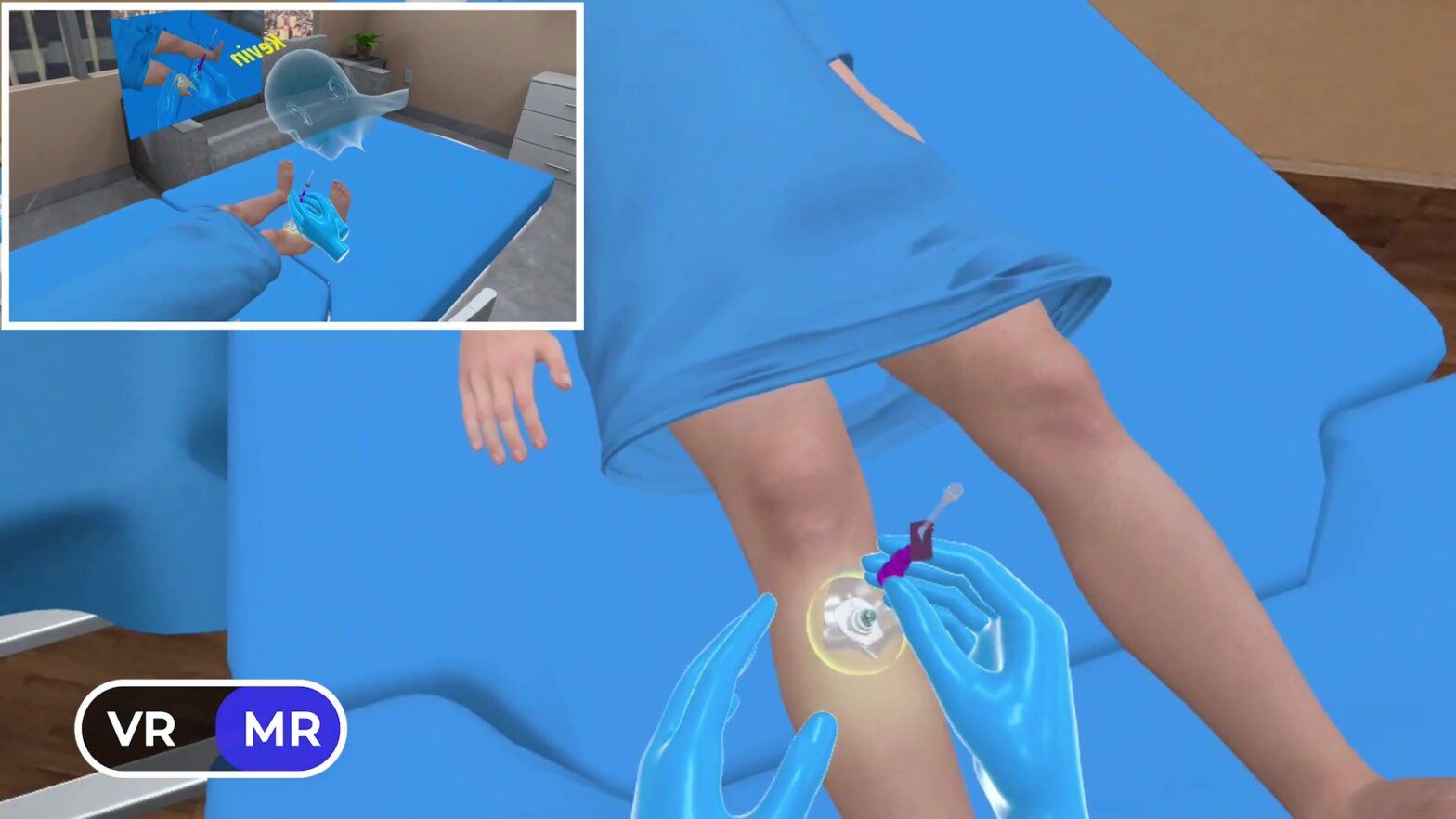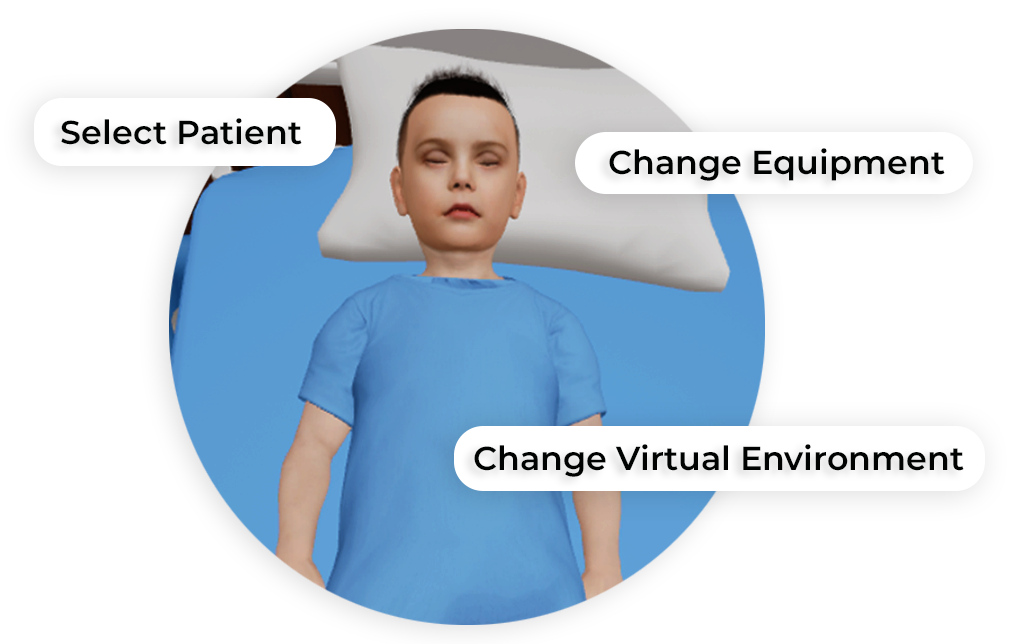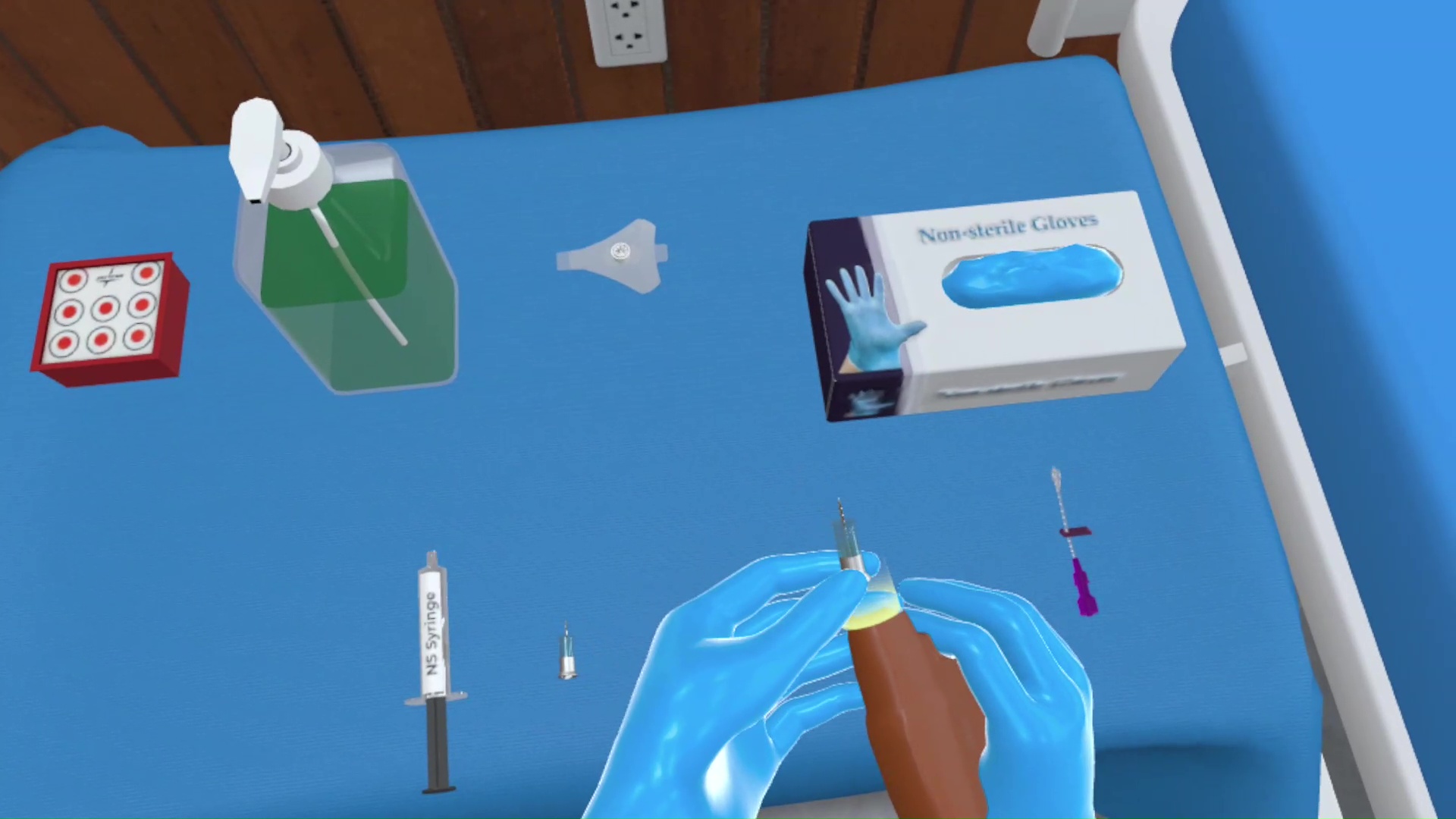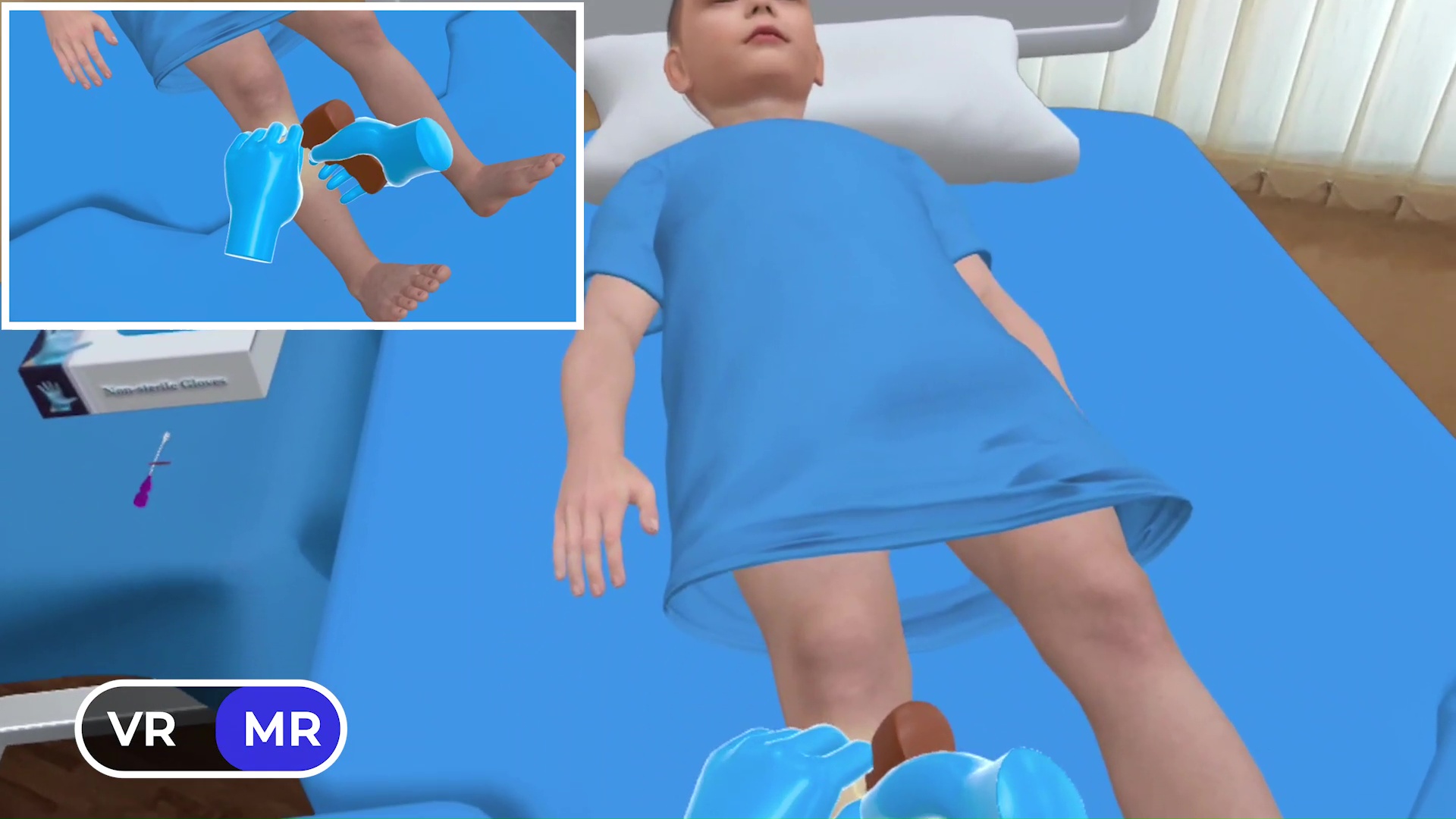Pediatric Intraosseous Infusion
Pediatric intraosseous infusion is initiated when vascular access is required emergently but is difficult to achieve via peripheral vain. Compared to adults, the level of care required is greater for pediatric patients. This in turn means enhanced skill, which comes from practice. Time of the essence and only a skilled professional can execute the procedure with efficiency.
This VR simulation for Pediatric Intraosseous Infusion is designed to help healthcare practitioners practice the procedure of in a safe and controlled environment with a virtual pediatric patient. With both training and assessment modes, learners can perform the procedure and assess themselves on their performance.
- Adopt standard hygiene procedure before initiating the insertion
- Follow clinically approved technique of inserting the needle
- Perform accurate placement of the cannula hub
- Ensure dressing is correctly placed

- NCBI Bookshelf. (n.d.). Intraosseous Vascular Access – StatPearls. Retrieved from https://www.ncbi.nlm.nih.gov/books/ NBK470382/
- Reichman, E. F. (Ed.). (2013). Chapter 55. Intraosseous Infusion. In Emergency Medicine Procedures, 2e. The McGraw-Hill Companies. Retrieved from https://accessemergencymedicine. mhmedical.com/ content.aspx?bookid=683 §ionid=45343694
Customize Your Program
Get rid of the editor. Adopt in-VR customization.
MedVR Education is bringing to you in-VR customization that will enable you to customize your procedural simulations by making selections from a range of feature choices.
- Select patient from a diverse background
- Choose preferred virtual environment
- Select equipment used in the procedure
- Modify difficulty level of the assessment mode
- …..many more to come

 Multi-playerSessions
Multi-playerSessions Physics-based Interactions
Physics-based Interactions
Core Skills Training

Pediatric Intraosseous Infusion
As a part of this Pediatric Intraosseous Infusion procedure, the user will begin by cleaning the insertion site with an alcohol swab followed by inserting the needle through the skin till it rests against the bone. The learner will then release the trigger, stabilize the needle set hub, disconnect the driver, and remove the stylet. Next, the learner will place the dressing and ensure its correct placement. The procedure will be complete after the learner documents the procedure.
All necessary affordances are provided to complete the procedure with efficiency.
Training
With prompts, guidance and affordances learners are hand-held through the process to practice the procedure in a virtual environment with a virtual patient.
- Photorealistic virtual environment
- Physics-based interactions
- Detailed instructions
- Adequate affordances to assist in task completion

Assessment
Test acquired skills to perform the procedures from start to finish without prompts. An incorrect step will take the learner back to the start to start afresh.
- Live scoring
- Instant feedback
- Adequate affordances for efficient performance
- Time tracking to monitor activity completion







